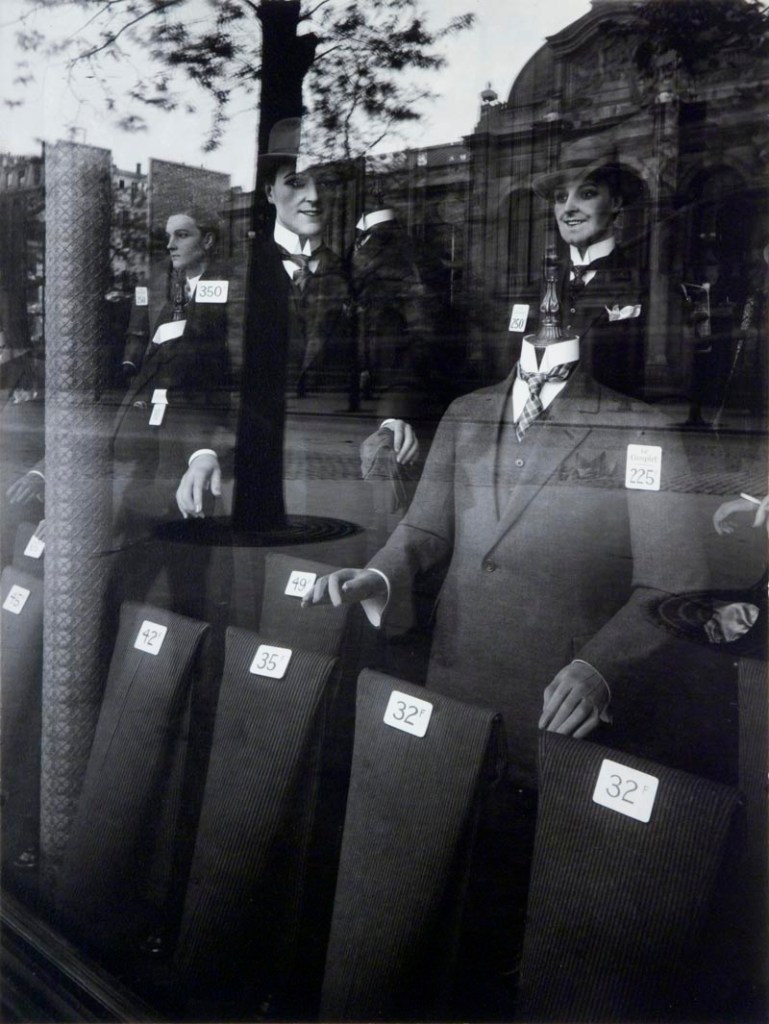
Men’s Fashions, 1925
Gold-toned gelatin silver print, 9 x 6 3/4 in.
About the Art
Eugène Atget photographed the dynamic changes he witnessed in Paris from the late 1800s to the mid-1920s. In this photograph from 1925, he focused his camera on a store-front display window of a men’s clothing store. In it we can see trousers and suits draped on various mannequins. The glass of the window reflects the buildings and the street that faces the store, creating the mysterious effect of two overlapping images. Atget was fascinated by the changing urban life he saw around him.
About the Artist
Eugène Atget never called himself a photographer; instead he preferred “author-producer.” Atget was born in 1856. He first tried his hand at painting and acting, then began to photograph the changing city of Paris in 1898. His achievement over thirty years of continuous work was a document of the transforming architecture and qualities of urban life. He earned a modest income selling these photographs to artists who would use them as studies to prepare their paintings. Atget often worked at dawn and loved the quality of morning light. He would carry a large old- fashioned camera that used glass plates, never switching to newer, more portable cameras. Though Atget was not well known during his lifetime, he became a great influence on later twentieth-century photographers, particularly Berenice Abbott. After Atget’s death in 1927, Abbott preserved his prints and glass-plate negatives, printing and exhibiting collections of his work outside of France for the first time in the 1930s.
Vocabulary
Studies – sketches, images, notes, or models used to help prepare a finished work of art.
Glass plate – an early camera type that made negative images on panes of glass. Later cameras would use plastic film negatives.